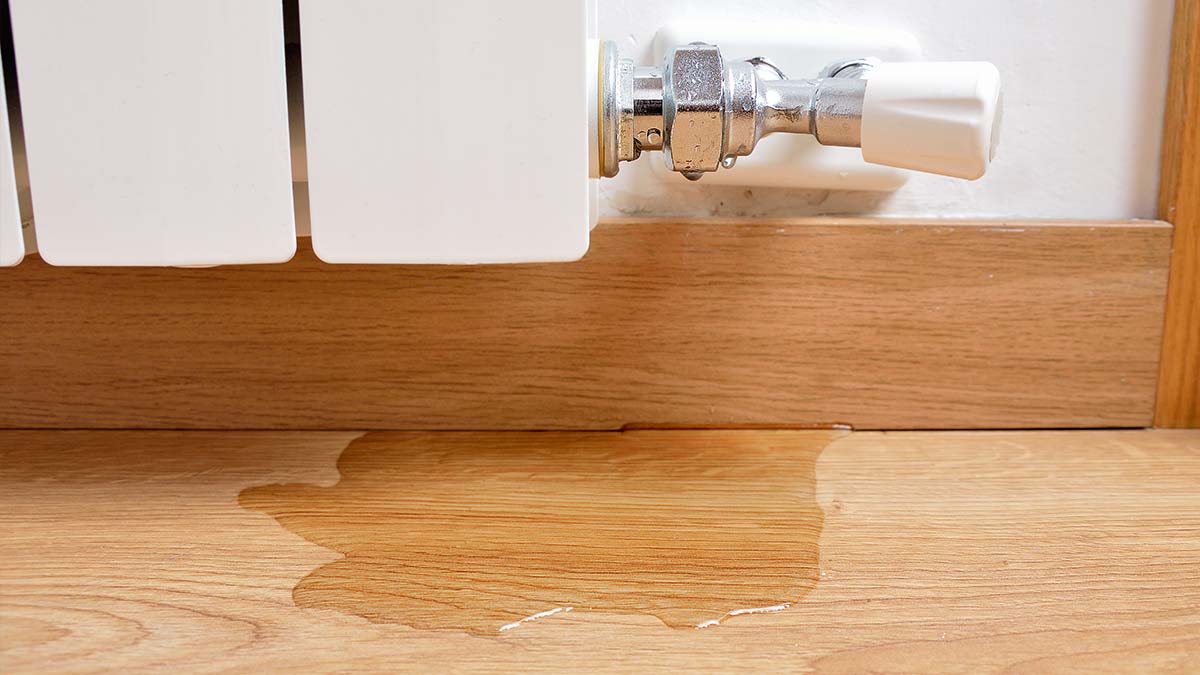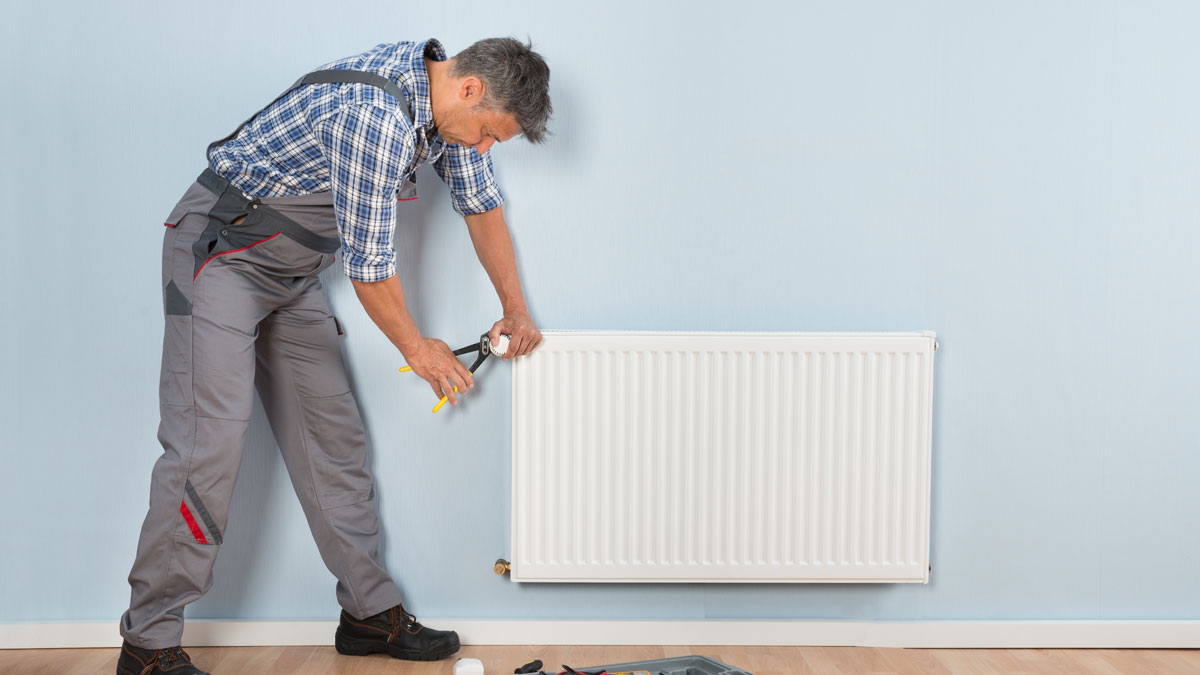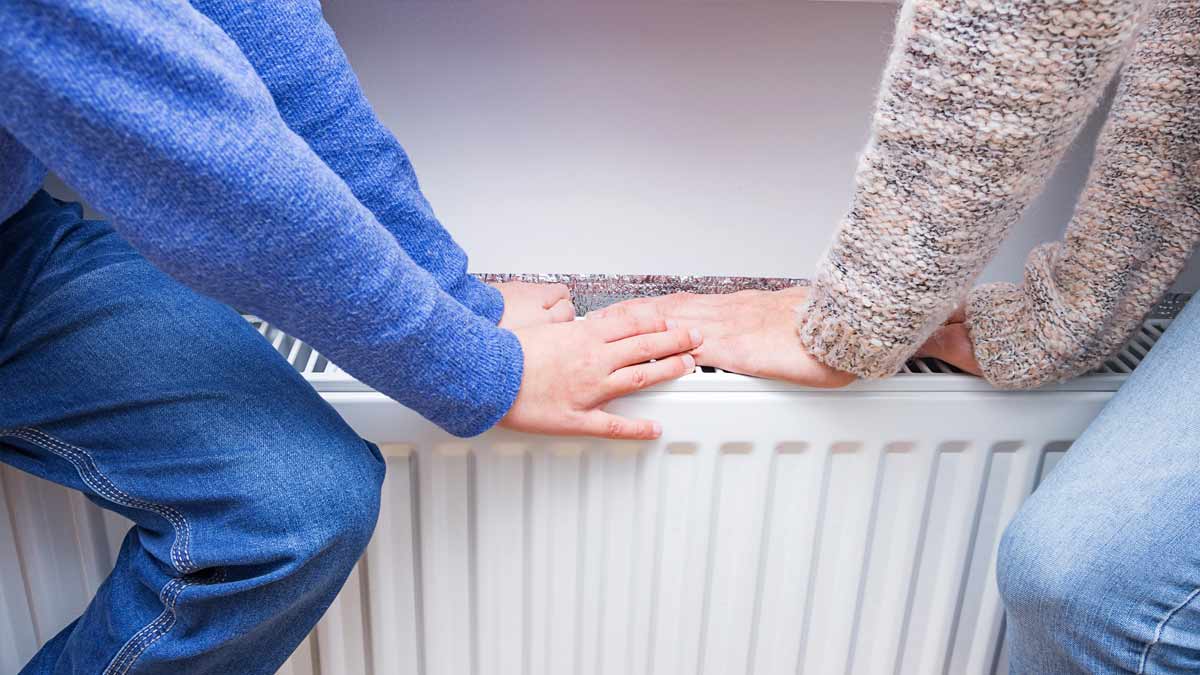If you notice water on the floors near your radiator, this can be a possible sign that your radiator valve is leaking. Getting a leak fixed promptly can help prevent leaking valve issues. To repair a leak, you must first locate the source of the leak. A drippy radiator is a problem that needs to be fixed rapidly. If your radiator valve is leaky, here is a specific guide on what you can and should do.
Leaking Radiator Valve - The Most Common Radiator Problem
Most radiator leaks come from the radiator valves. Water escaping from radiator valves can harm floors and furnishings over time. Radiator valve leaks can occur for several causes. Internal stem packing damage is the typical cause of radiator valve issues. This leak only happens when the valve is half open and ends when the valve is closed. A water leak will result as the valve starts to become less watertight as it becomes looser. A loose union nut on the lock shield valve is another typical cause. As leaking valve issue can be tricky, you can seek professional help in Radiator Repair Service fixing.
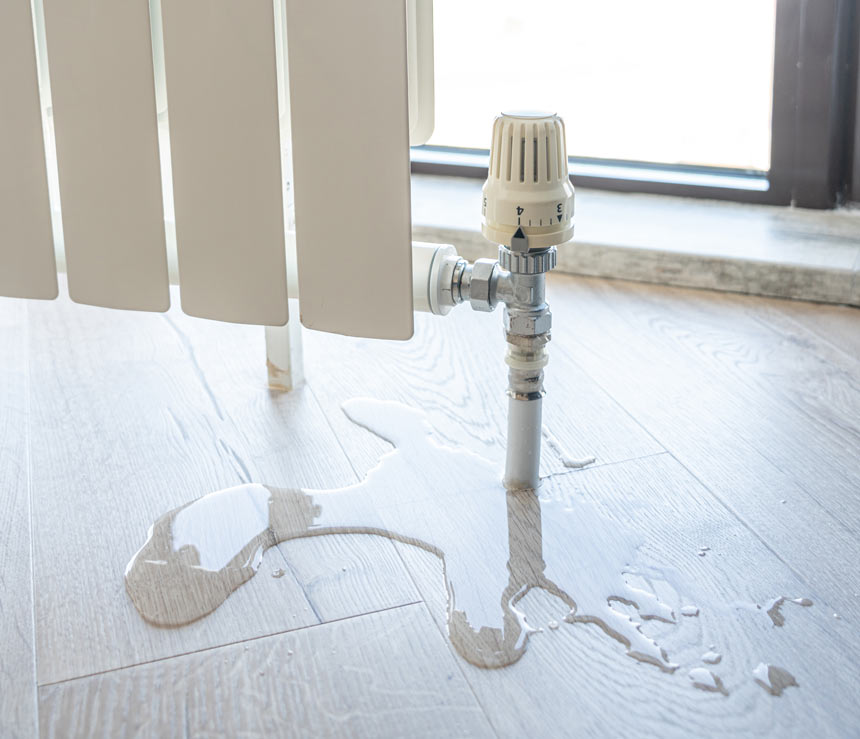
A Leaky Radiator Valve
Locating the Leak
The first step in fixing a dripping radiator valve is finding the cause. Radiator leaks are simple to locate, but the cause may not always be clear. Fortunately, most leak issues may be resolved quickly. There are some simple steps you can take to find out what is causing the leak:
- Prepare your tools by gathering some discarded clothing and a bucket to collect any water that spills while you are cleaning up the water.
- Dry the radiator by patting the entire radiator with one of the old rags
- Apply tissue paper to the whole surface of the radiator, including the valve and pipes, to check for moisture.
- Find the location where the tissue gets moist; this could be the source of the leak.
How to fix the leaky radiator valve
There are several causal factors for your radiator to leak water, you need to take the appropriate steps.We suggest some general solutions in the article How to Fix a Leaking radiator. In this article we deal specifically with a leaking radiator valve. Once you’ve determined the most common reasons for a radiator valve leak, you can start repairing your radiator valve. Make sure your radiator is off before you start.
Leaking Radiator Valve Nut
The most common and easiest leak to repair is a leaking valve nut. Most of radiator valves have three nuts:
- The side nut attaching the radiator to the valve
- The nut holding the valve to the heating system at the bottom
- The nut for the packing gland on the valve’s top
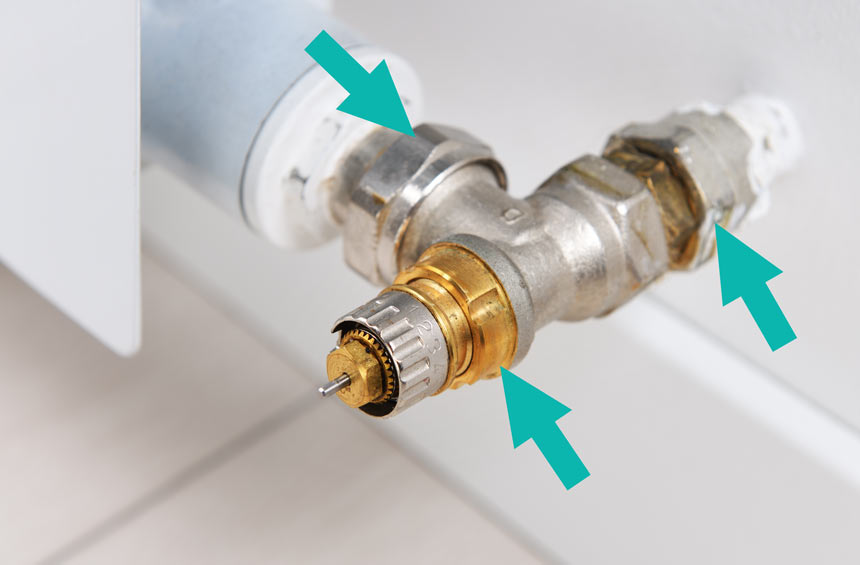
To fix a leaky valve spindle, simply use your spanner to tighten the gland nut. If it doesn’t work, have a quick look at the following steps:
- Drain the leaking valve beneath the leak.
- Turn off the power and close the shield valve anti-clockwise
- Apply adequate pipe jointing compound around the threads on the leaking nut
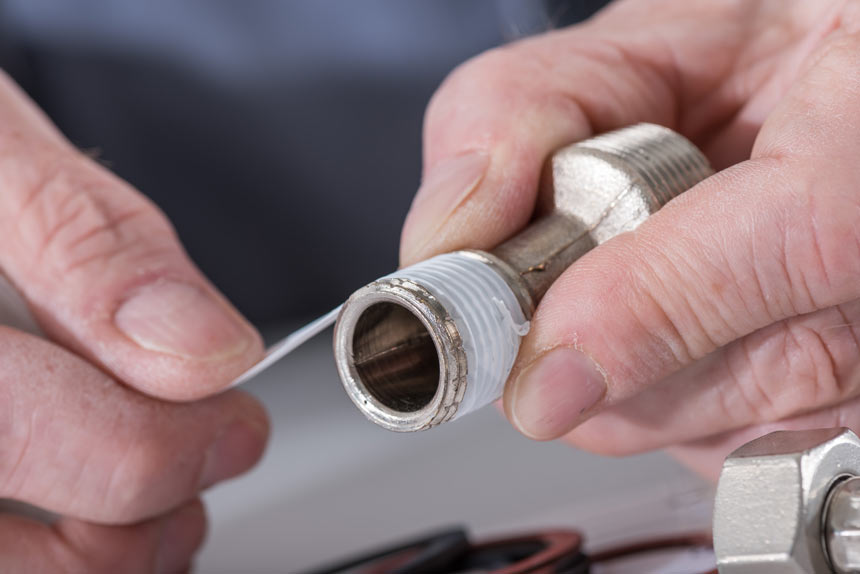
Plumbing Jointing Compound
- Retighten the nut on the radiator valve.
- Remove any remaining pipe jointing compound from the valve.
- Refill the central heating system and check for leaks
Leaking manual valve
A leaky seal cover on a manual valve is the most frequent issue. The gland is where the valve spindle meets the valve body. The gland nut, which is the tallest nut you can see on the spindle, compresses the packing in the gland surrounding the spindle in order to prevent water from leaking around it. Tightening this nut compresses the packing and may prevent leaks. The spindle will become too stiff to turn if you tighten it too much. If this kind of valve leaks, closing or opening it completely may be able to stop it for a while, but the valve will eventually need to be replaced.
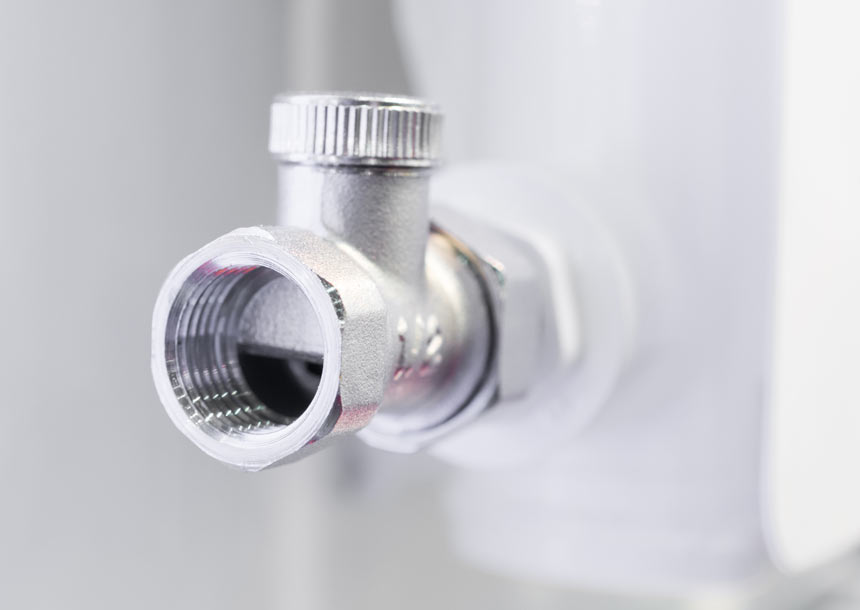
Manual Valve
Leaking Radiator Lock Valve
This is a similar issue to a manual valve, and the solution is the same: get some PTFE tape and follow the procedures above.
Leaking Thermostatic Radiator Valve
Like a manual radiator valve, a thermostatic radiator valve (TRV) has a few more places where a leak could happen. The simple solution is to buy a new valve and replace the old one if the TRV is leaking from within the valve and this isn’t the source. But for a quick fix, you can follow the below procedures.
- Isolate the radiator simply turning both the TRV and the lockshield valve on the other side to ‘off’ or closed.
- Consider the two compression nuts as they may be the cause of the leak
- Unthread the insert to expose as much of the threads as possible.
- Wrap PTFE tape around them in the same direction that the threads unravelled.
- Tighten the nut and olive.
- Re-open the valve to check for leaks.
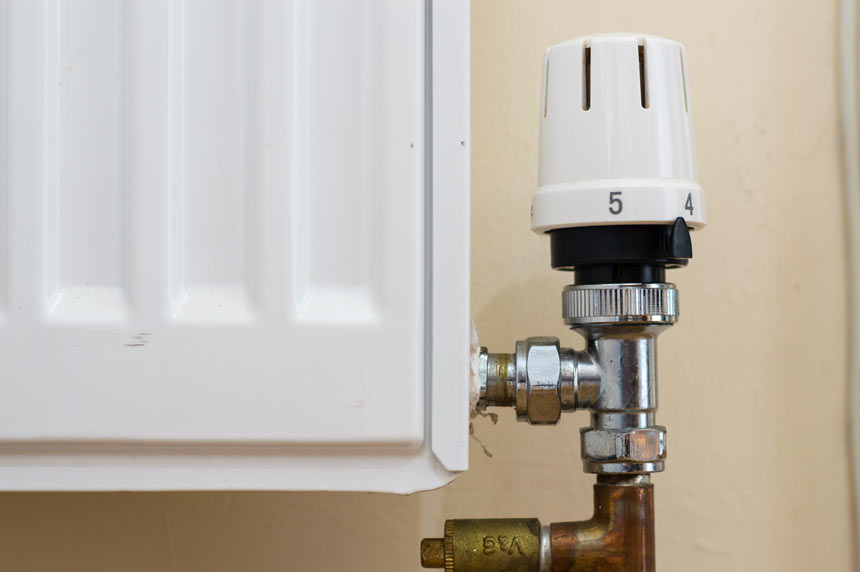
TRV Valve
Radiator Bleed Valve Leaking
A leaking bleed valve can cause chaos in a pressurized system and should be fixed quickly. Although you might attempt to reseal the bleed plug by taking it out, it is usually best to buy a new one.
Replace a Radiator Valve
When and how?
After using our procedure, if your radiator is still dripping, the radiator valve may need to be entirely replaced. We have provided a general replacement solution below. If the problem is with the TRV, read our detailed guide on how to Replace the TRV . Make sure the radiator valve you choose to replace is suitable for your radiator when doing so.
To replace the drippy valve, follow the procedure below:
- Drain the system
- Unscrew the nuts holding the water line to the valve
- Unscrew the valve itself to install the replacement valve
- Clean the radiator’s end threads before installing the replacement valve.
- Wrap PTFE tape around the new adapter’s threads
- Twist PTFE tape into the end of the radiator
- Connect the new valve by slipping the valve cap-nut and a fresh olive over the pipe’s end.
- Refill the system after installing the new valve, and bleed your radiators to get rid of any air.
Replacing a dripping radiator valve can be tricky. If yours needs replacing and you’re not confident doing it yourself, don’t hesitate to call a pro. We are ready to help with an experienced and qualified Radiator Replacement and Installation Service! You can call PROPLUMBER.UK and get one of our plumbers to replace the valve.
Is a Leaky Radiator Valve an Emergency?
A radiator valve leak doesn’t have to be serious, but it needs to be considered to prevent water damage to your home. It may also result in issues like water damage to your furniture and flooring. Quickly fixing leaks can prevent these types of problems. In addition, radiator valve leak can also cause central heating systems to fail due to pressure loss in the boiler.
To solve the challenging leaks, you can use all the ways listed above. However, it is best to call a professional plumber as soon as possible if you don’t feel safe doing the repairs on your own. If you are pressed for time, or don’t want to risk damaging your precious heating system, our experienced team in the Radiator Replacement and Installation Service will be happy to take care of this for you.
How useful was this post?
Click on a star to rate it!
Average rating / 5. Vote count:
No votes so far! Be the first to rate this post.



